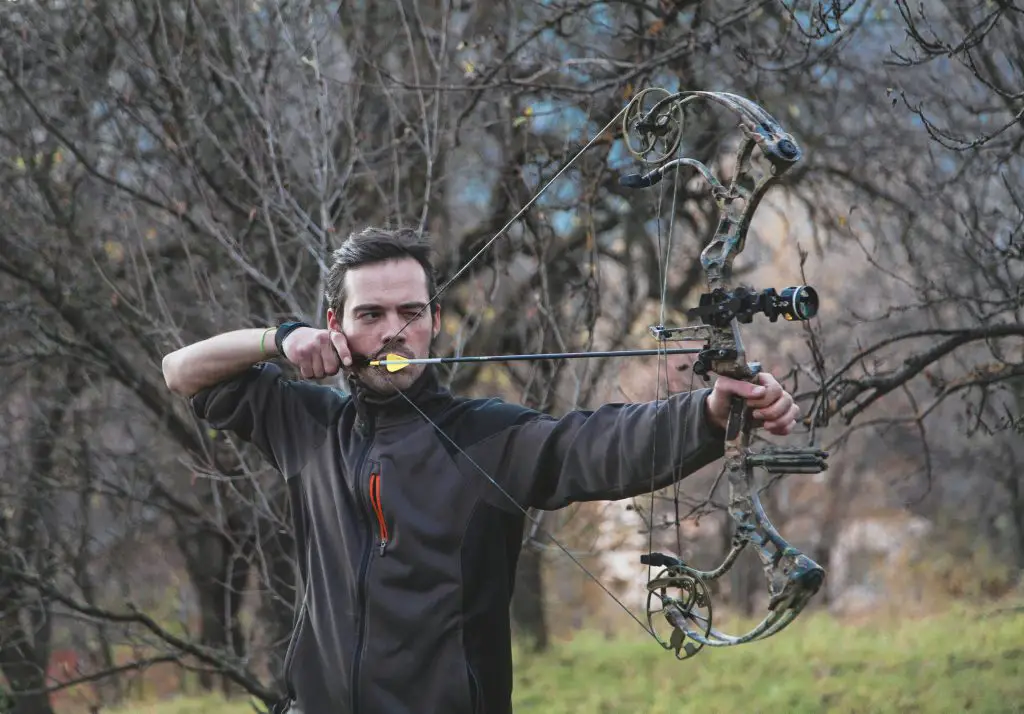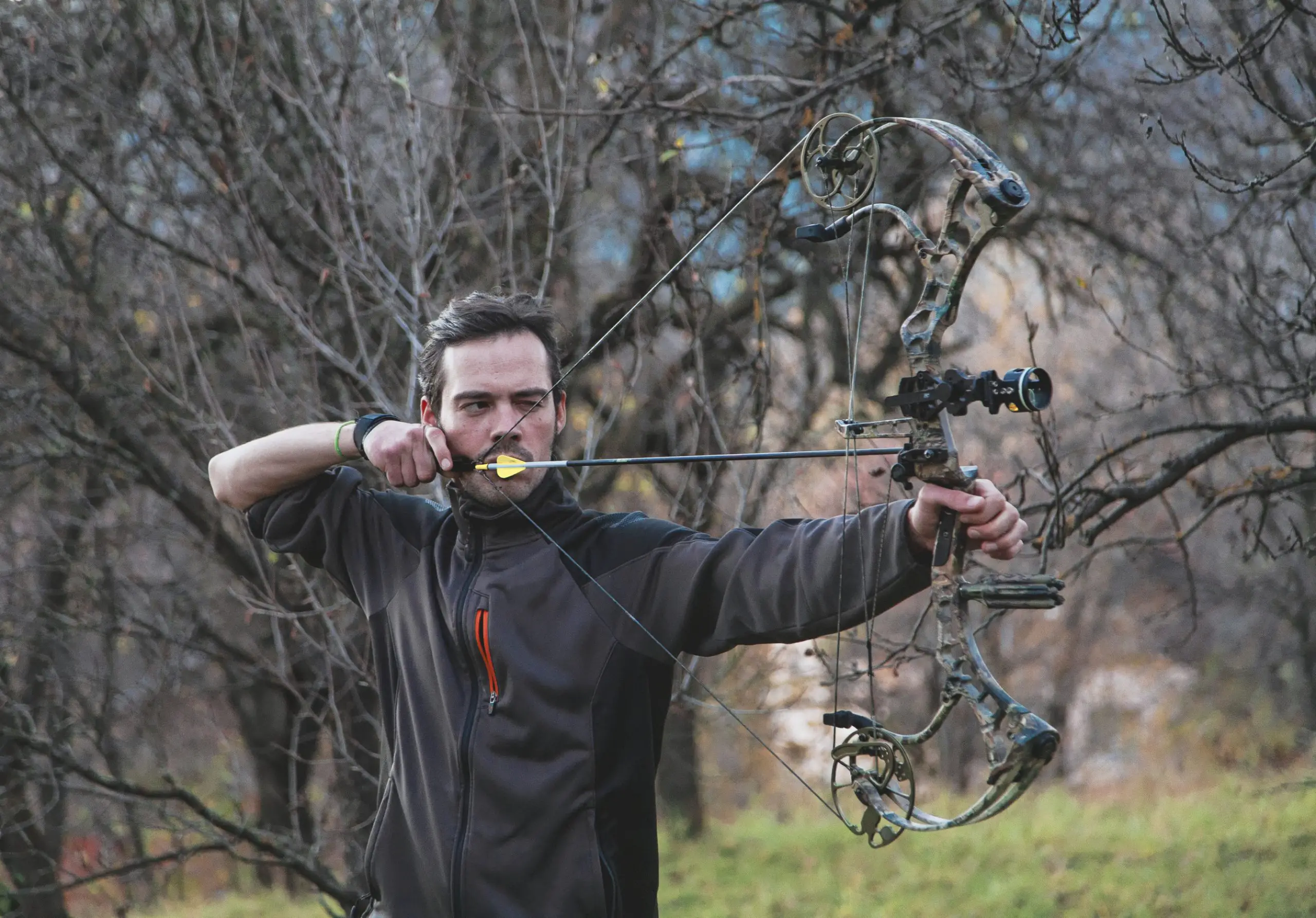Last Updated on May 13, 2023 by Dwayne Easton
Early November is my favorite time of the year. This is the time when I can fully enjoy myself in the absence of game animals. Since my father had a compound bow, I was introduced to bow hunting as soon as I started hunting. He would bring me a bow and train me on how to use it. From nocking and drawing to aim and release of the arrow, I found the whole process truly captivating. Soon my grandfather gifted me an aluminum bracket to mount a crossbow with a laser pointer. I would simply aim the laser at the deer and pull the trigger. I finally found something I was excellent at. I started learning more about bows as I grew up. And then one day I asked my father for a compound bow. Unfortunately, bow hunting was not all fun and games as I thought it would be. Sitting in the stand hour after hour and then rarely see anything was a test to my patience level. It took me a long time to understand the ins and outs of bowhunting, and then I realized why I had no success. In this article, I will discuss with you how to get started with bow hunting and share some basics to ensure a fun and successful hunt.

Finding a Suitable Bow
Bowhunting helps you develop your physical as well as mental activities. You can choose a bow, depending on your need and skills. Various types of bows are available in the market. But the knowledge of these four prominent bows for beginners is enough.
Compound Bow
A compound bow is the latest and the most commonly used bow. Expert hunters like this bow for its accuracy and speed. It is designed in a way to reduce the strain on your shoulder. It has rigid limbs to give it extreme power and precision. A compound bow is highly demanding because everyone wants to nail a shot even in their sleep. This bow is quite useful because of its let-offs. You can hold your draw for several minutes while waiting for your target.
Crossbow
Crossbow is the simplest bow made of wood. It operates like a firearm. The bowstring is generally pulled back to fire the arrow. Fingers and back muscles are involved, which require the hunter to be fit and strong. Crossbows have the simplest mechanism. Therefore, it is less likely to spook or miss the target. Crossbows are great for starters who want to master the art quickly.
Longbow
As the name says, the bow is long. The length of the bow allows the crossbowman to hold a long draw. Less dry and flexible wood is used to make the longbow. It is different from the recurve bow and curves only when the twine is connected. The longbow works best for big games. The accuracy and strength of the bow are amazing.
Recurve Bow
Recurve bow uses older technology than compound bow in which the limb curves when the string is removed. This curve makes the bow to store a lot of energy and deliver it to the target while shooting. Due to the quick draw and release function, it is mostly used in the Olympics. These bows are easily distinguishable due to the fiber glass and wood construction. Depending on the type of hunt and the best fit, you can choose a bow of your own choice. It is always better to have a friend or family member to help you out in this regard.
You can choose more accessories from a wide range to increase the hunting odds.
Shooting With a Bow
I still remember the tremendous moment I first killed a white-tail deer with a bow. In order to use a bow, you need to understand a few terms as a beginner. The first one is the stance, i.e. standing properly. The hands and shoulder must be symmetric towards the target. You should also be able to keep your body not to bend forward or backwards while shooting the arrow. Next one is aiming and drawing. You should always be able to spot a clear target before aiming. If your stance is correct, you will be able to have the right aim easily. Once you have the right stance and aim, all you need next is to draw. While having an upright arm, use your index, middle and ring finger to draw. After a few practices, you will naturally get the vibe. The last thing you have to do is to let go of the arrow and release. VOILA!
Stepping Up Your Hunting Game
I would recommend going after attainable targets as a beginner. The target should be big enough to take a shot successfully. Therefore, start with a big game. White-tail deer and big-horned sheep are the perfect game animals if you are just starting. Once you are confident in your skills, you can step up the game with small animals. Both big game and small game need research-based knowledge about the animal and the season. Be reasonable if you miss a bird or a squirrel because it is common.
Other Accessories You Need
In order to get started with bow hunting, there are some other accessories you might need apart from the bow itself. These include an arm guard, finger tab and gloves for your dominant hand (for me it is the left one). Some prefer a trigger release over a finger tab. Sights are also crucial to pinpoint the distance from the target. The most common ones are crosshair sights and pin sights. Arrows and arrowheads are another essential for bow hunting. The length of these depends on the draw length and the type of bow you are using.
What Animals Can Be a Hunt With a Bow?
Large Game: A bow can hunt large games like moose, elk, goat, sheep, deer, bear, boar and caribou.
Small Game: Small game animals are rabbit, skunks, geese, raccoon, squirrel and pheasant.
At What Age Should You Start Bow Hunting?
The USA ARCHERY recommends the lowest age to be 8. The learning depends on the child’s ability, maturity and strength. The learning process should be made enjoyable and fun. While following the safety rules regularly, it can provide a great opportunity to tweak their abilities.
Final words:
There is a big difference whether you are hunting with a gun, rifle or a bow. Eventually, the most crucial part after gathering the knowledge is practice and experience because practice makes perfect.

